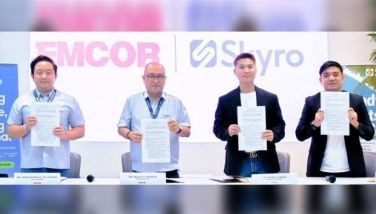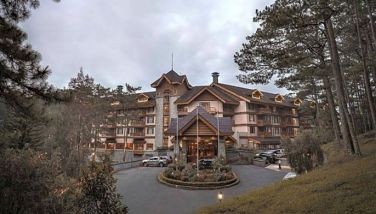The Bodong peace-making system - From the Stands

The 1999 Aurora Aragon Quezon Peace Award for Peace Through Participatory Development is the Cordillera Bodong Administration -- a voluntary initiative among ethnic groups that should inspire warring lowland groups to put their act together for peace.
In his acceptance speech on behalf of his colleagues, Emilio M. Liwanen traced the historical roots of bodong, saying it was created by the different tribes of Kalinga, Bondoc, and Ifugao "in the olden days when the mountain or Cordillera people were branded as headhunters, or as people who practiced the law of the jungle, who realized that killing somebody who offended you without proper investigation was not a solution to problems." In those days, he said, fear of reprisal was very strong, the tribes did not trust each other, and knowledge and development were not shared among the tribal folk. When the bodong system was established and confederated, "it neutralized everything, and made the relationship among tribes so strong that the fault of one became the fault of the whole tribe."
When for example, the Hukbalahap movement came to the Cordillera to escape the authorities, the tribesmen moved as one, and overpowered the dissidents "even without the use of high-powered weapons." In recent years, the Cordillera NPA members who then formed the Cordillera People's Liberation Army defected to the bodong, pledging "to fight the insurgency in the region, as well as act as a security force to the indigenous system."
When non-Bodong tribes saw the effectiveness of the Cordillera Bodong Administration, they also joined. As Liwanen said, "It is now well-accepted and realized by our people that without peace there will be no development, and development will not take place where there is no peace. The bodong system is now being utilized to reunite tribes who had been divided by arbitrary administrative and social boundaries, and most specially to protect/safeguard the rich natural resources within the territory which had long been exploited and damaged by unscrupulous outsiders."
The bodong administration is an institution recognized by the Philippine government by virtue of Executive Order 220; it isnow guided by the Pagta of 1986, based on indigenous laws of the Cordillera. Leadership is handed down from an incapacitated pangat or leader to his successor. The bodong is represented in the provincial and regional governments, the representation elected every four years through a bodong congress.
NGOs (non-governmental organizations) are now experiencing the results of a decline in overseas development assistance (ODA) provided by donor countries like the United States, Japan and the United Kingdom. ODA slid 15 percent from US$55 billion in 1996 to USD$47 billion in 1997. As a percentage of the donor countries' gross domestic product (GDP), development assistance went down from .33 percent to .22 percent in the last seven years. This means a loss of one-third of aid money normally allotted to recipient countries, including the Philippines.
As a result of declining assistance, a number of NGOs have had to find alternative resources to keep going. Save the Children has begun selling a line of men's neckwear. The Philippine Business for Social Progress is able to sustain its programs because big corporations contribute one percent of their profits to PBSP's community development projects. UNICEF has tapped the assistance of private individuals to fund projects for children. Others have started re-examining their own fund-raising skills, shying away from the usual garage or bake sale.
What to do? The issue will be discussed during the 8th Asia Pacific Fund Raising Workshop at the Institute of Management Conference Center March 21-14. Jaap van der Straaten of Plan International Asia and chair of the workshop national organizing committee notes that the dip in the flow of funds is due to "donor fatigue." Many donor countries are dissatisfied with the results of development projects implemented by some NGOs. There is also very little support in the Senate to give more counterpart aid to NGOs and government organizations (GO's). Another reason is that some donor countries now see Asia as a region that could very well take care of itself.
A new thrust in aid will be felt with the initiation of the Comprehensive Development Framework Initiative of the World bank, wherein donor agencies like USAID, the Canadian International Development Agency (CIDA) and the Australian Agency for International Development (AUSAID), will deal directly with governments for better donor coordination.
Finlay Craig will present techniques in writing proposals, establishing funding strategy and effectively communicating the NGO's funding message to non-traditional sources of funds such as the business sector and private individuals.
- Latest
- Trending





























